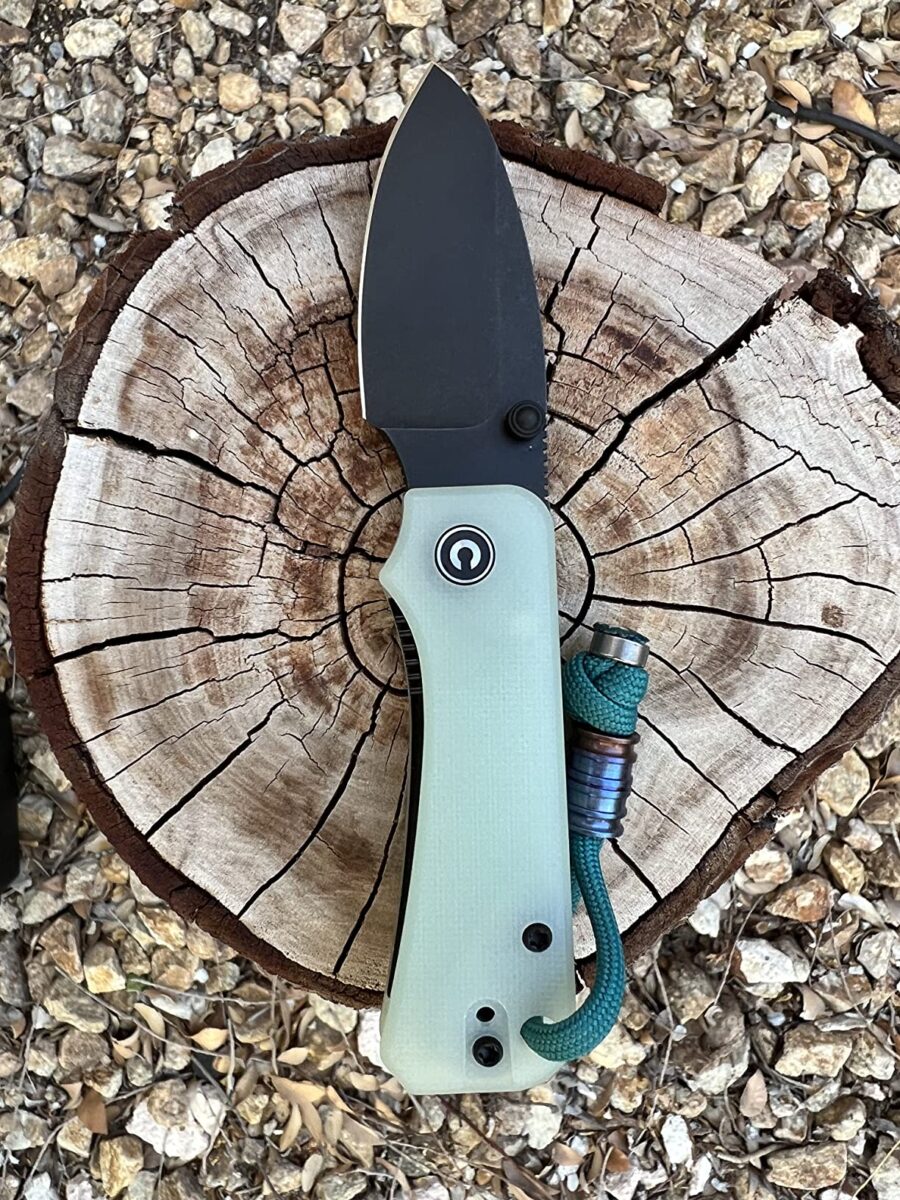154CM and Nitro-V are two budget-oriented stainless steels popular in pocket and kitchen knives.
154CM stainless steel was developed by Crucible Industries while Nitro-V was designed by New Jersey Steel Baron in collaboration with Buderus Steel.
The key difference between these steels is that 154CM relies heavily on a high molybdenum addition for hardness and corrosion resistance.
While Nitro-V steel utilizes nitrogen for hardness and higher chromium for corrosion resistance.
A powder metallurgy version of 154CM, CPM-154, was later introduced by Crucible to improve upon the conventional 154CM steel toughness and carbide structure.
Recommended Knives:
In comparison testing, 154CM demonstrated better edge retention and wear resistance owing to its higher achievable hardness and carbide content.
Nitro-V vs 154CM Steel At A Glance
| Property | 154CM Steel | Nitro-V Steel |
|---|---|---|
| Toughness | 5-7 ft-lbs | ~20-25 ft-lbs |
| Hardness | Up to 64 HRC | Up to 64 HRC (aim 60 HRC) |
| Edge Retention | Higher (20% over Nitro-V) | Lower |
| Ease of Sharpening | More difficult | Easier |
| Corrosion Resistance | Very good (Mo addition) | Very good (Cr and N addition) |
| Carbide Content | Higher (17.5%) | Lower |
Toughness
Nitro-V steel demonstrates higher toughness compared to 154CM steel, which can be beneficial for certain knife applications.
The analysis of Nitro-V steel shows it achieved toughness values of ~20 to 25 ft-lbs on average in the optimized condition, using unnotched Charpy tests.
154CM steel has toughness fairly comparable to 440C stainless steel, in a similar hardness range. Reference toughness values show 154CM achieving 5-7 ft-lbs depending on exact hardness.
The higher toughness of Nitro-V steel makes it better suited for knives meant to withstand high impacts without chipping or breaking.
CPM-154 demonstrates higher toughness and improved grindability compared to conventional 154CM, bringing it closer in performance to Nitro-V.
However, testing data still shows Nitro-V steel achieving nearly double the toughness of CPM-154 steel.
Hardness
154CM steel can reach slightly higher hardness values than Nitro-V Steel, Specifically, the datasheet for 154CM steel states it can reach hardness values up to 64 HRC
In comparison, Nitro-V steel can reach peak hardness values approaching 64 HRC under an optimized heat treatment but its aim hardness is in the lower 60 HRC for optimal properties.
The higher workable hardness for 154CM may provide marginally better edge retention and durability in extreme-use knife applications.
Edge Retention
154CM steel demonstrates better edge retention and wear resistance compared to Nitro-V steel for most knife applications.
154CM steel has about 20% better edge retention in CATRA testing compared to Nitro-V steel, owing to its higher attainable hardness.
154CM steel micrographs also show it has a higher volume fraction of carbides (17.5%) compared to Nitro V steel which contributes to wear resistance.
Nitro-V steel wear resistance is expected to be very similar to AEB-L steel, as they have comparable compositions and microstructures.
Ease of Sharpening
Nitro-V steel is easier to sharpen and grind compared to 154CM steel.
154CM is more difficult to machine and grind than 440C steel, due to its higher volume fraction of chromium carbides (17.5%).
The lower carbide content and finer carbides of Nitro-V stainless steel make it significantly easier to sharpen and grind than 154CM stainless steel.
Nitro-V knife steel is noticeably easier to put an edge on and finish to a fine polish compared to 154CM knife steel.
Nitro-V steel lower carbide content provides an advantage over both 154CM and CPM-154 steels in ease of sharpening.
Corrosion Resistance
154CM and Nitro-V are stainless steels that exhibit very good corrosion resistance suitable for most knife applications.
154CM Stainless steel achieves its corrosion resistance through a higher molybdenum addition while Nitro-V stainless steel relies more on chromium and nitrogen addition for corrosion resistance.
Nitro-V and 154CM stainless steels have better corrosion resistance than 440C stainless steel due to their advanced alloy content.
Nitro-V nitrogen addition provides some improvement to corrosion resistance over AEB-L steel.
The high chromium content of Nitro-V stainless steel also imparts good corrosion resistance.
For knives that will see significant use in marine environments, the nitrogen-enhanced corrosion resistance of Nitro-V may provide an advantage over 154CM steel.
Final Thoughts on Nitro-V vs 154CM Steel
154CM and Nitro-V both offer a lot of value for knife makers looking for affordable stainless steel with well-rounded properties.
While 154CM boasts better edge retention thanks to its high hardness and carbide content, I would lean towards recommending Nitro-V for most applications.
The much higher toughness of Nitro-V compared to 154CM is a big advantage in my opinion, as it allows for thinner and sharper edge geometries without compromising toughness.
This toughness makes Nitro-V an exceptional choice for kitchen knives and other larger blades where cutting ability is paramount.
Furthermore, Nitro-V steel’s superior ease of sharpening saves time and effort in putting on the final edge.
While CPM-154 closes the gap in performance between 154CM and Nitro-V, Nitro-V still excels in toughness and ease of grinding.
For knives where edge retention is paramount, 154CM/CPM-154 remains the best choice, but for larger knives where toughness and ease of sharpening are more critical, Nitro-V stands out.
